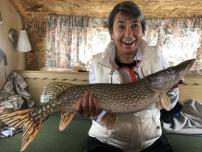

The sub-two-hour marathon – an attempt that came thisclose to succeeding two years ago, is back for another try this October, and so is world marathon record-holder Eliud Kipchoge of Kenya, who was part of the first attempt. And running event organizers are hoping it can help pump up interest in the marathon (and distance running) as a whole.
The new attempt, an article in Runner’s World notes, “is dubbed the Ineos 1:59 Challenge, is sponsored by manufacturing company Ineos. It is scheduled to take place on a flat, 9.6K circuit in a shaded park called The Prater in Vienna, Austria, on October 12, Ineos announced on June 27. (There is an eight-day window up to October 20 where he could make the attempt should the weather not be ideal on October 12.) According to a press release provided to Runner’s World by Ineos, Kipchoge will run out and back on a 4.3K stretch of tree-lined pavement roughly 4.5 times.”
The conditions in that area of Vienna are expected to be optimal at that time of the year. When the 2017 attempt (at the Nike Breaking2 Project in Monza, Italy) ended in a heartbreaking finish time for Kipchoge of 2 hours and 25 seconds, analysts were quick to point out that temperatures were higher than expected and that the humidity was 79 percent – neither of which is optimal for elite marathoners, who all but manufacture sweat. They are hoping for cooler, less humid conditions this October – and a winning time for Kipchoge.
The sub-two-hour marathon has been elusive, and there are plenty who think it’s statistically improbable, at least any time soon. (This study provides an almost eye-crossing mathematical analysis of how, why – and when the barrier might be broken).
Whatever the odds, Kipchoge seems ready for the challenge—and says he is prepping himself for another run.
“I believe in good training and good preparation,” he told Runner’s World at a press conference after his Breaking2 attempt in 2017. “If I have that, the 26 seconds will come.”
The good news for sports planners is that in many cities that host their own hometown marathon, Kipchoge’s attempt will come at the same time as those local running festivals – many of which are timed to take place in the fall as the weather cools and the humidity drops. And while it’s unlikely there will be any sub-two-hour performances, the buzz that has been building in running circles around the new attempt is likely to egg on those who might be on the fence about whether or not to participate.
The second attempt – and the success it might have – can also be a shot in the arm for the U.S. marathon, which fell slightly in participation in recent years. According to Running USA’s Marathon Report, a record-high 550,600 finishers were reported in U.S. marathons in 2014. The figure dropped in 2015 and again (though only slightly) in 2016.
Something else we might see – and which running event organizers might want to take into consideration – are watch parties for the new marathon attempt. In 2017, Fleet Feet Sports Chicago hosted a party, hilariously noting, “We will have the event on a large projector, we'll have beer, we'll have food, and we'll even maybe have some furniture to lounge on.”

